Tortie Ragdoll cats captivate cat lovers with their stunning blend of vibrant colors and classic Ragdoll charm. These calico-like beauties feature swirling patches of orange, cream, black, and sometimes chocolate on their plush coats, all paired with striking blue eyes. If you’re searching for Tortie Ragdoll cats, you’re likely drawn to their unique genetics and one-of-a-kind patterns that set them apart from traditional pointed Ragdolls. Discover everything from their fiery fur to laid-back personalities in this comprehensive guide.
For more on rare Ragdoll shades, check out the lilac ragdoll, a delicate gray-cream variant prized in breeding programs.
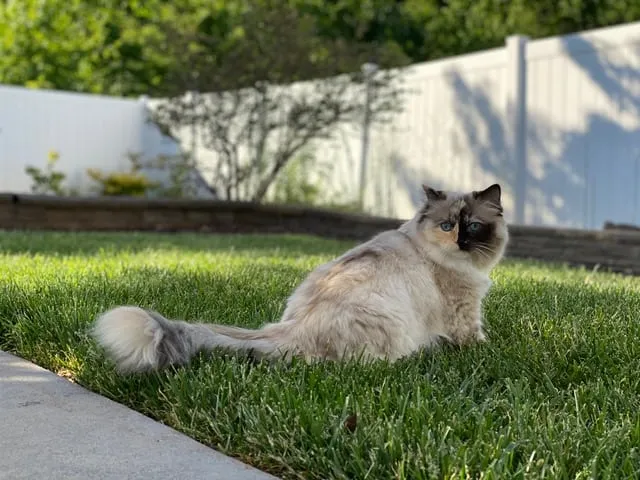 Prada, a 5-year-old seal tortie mitted Ragdoll cat from Kansas Ragdolls, bred by Leanna at House of Steward Ragdolls
Prada, a 5-year-old seal tortie mitted Ragdoll cat from Kansas Ragdolls, bred by Leanna at House of Steward Ragdolls
The Genetics Behind Tortie Ragdoll Cats
The magic of Tortie Ragdoll cats stems from X-chromosome genetics. Female cats have two X chromosomes, and the orange fur gene resides on one. When both carry the gene, the cat is solid orange; with one, it creates the mottled tortie pattern as the colors randomly “patch” during development. Males, with only one X, rarely show true tortie coloring—making female Tortie Ragdolls the norm.
This genetic quirk explains why no two Tortie Ragdoll cats look exactly alike, with colors dancing across their bodies rather than strictly following point markings.
 Sookie, a seal tortie Ragdoll cat loved by Addy, shown as kitten and adult
Sookie, a seal tortie Ragdoll cat loved by Addy, shown as kitten and adult
Tortie vs. Calico vs. Torbie: Key Differences
What’s the difference between a tortie and a calico Ragdoll? The main distinction is white spotting: calicos have prominent white areas due to an extra spotting gene, while torties blend colors without much white. In Ragdolls, “calico” often means tortie or torbie due to breed naming conventions.
A torbie adds tabby stripes (lynx gene) to the tortie base, creating patterned patches. Explore colorpoint ragdoll variations for more on pointed patterns.
According to CFA standards and sources like PetHelpful, Tortie Ragdoll cats always retain blue eyes, regardless of coat.
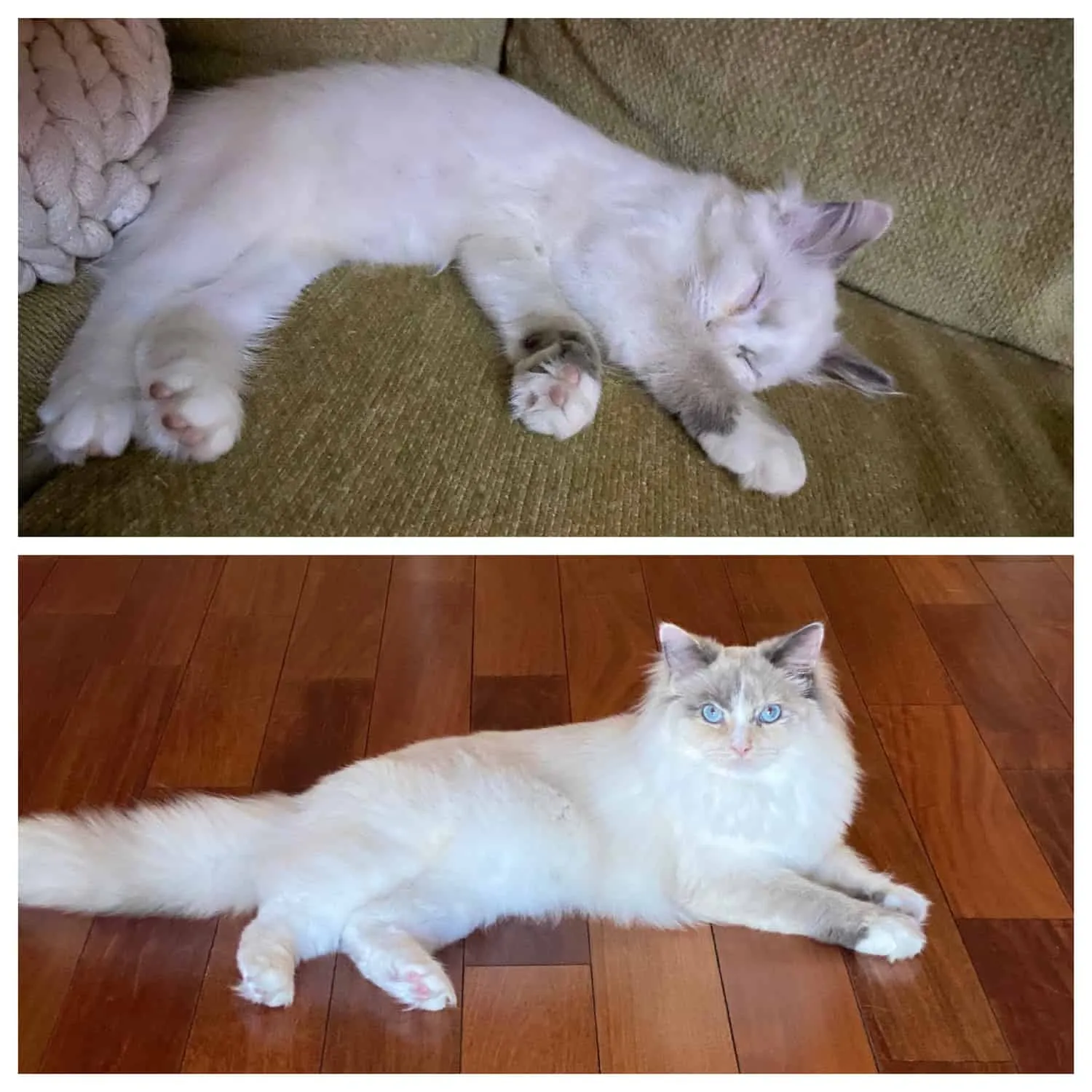 Jingle, a blue cream tortie Ragdoll cat loved by Kim, as kitten and adult
Jingle, a blue cream tortie Ragdoll cat loved by Kim, as kitten and adult
Coat Patterns and Standards for Tortie Ragdolls
CFA breed standards define Tortie Ragdoll cats precisely. Seal-tortie points feature pale fawn or cream bodies shading lighter on the underbelly, with seal brown points mottled in red or cream. Nose and paw pads show seal with pink mottling. Chocolate-tortie points are ivory-based, with milk-chocolate points possibly mottled in cream or red, and cinnamon-shaded pads.
Lynx versions add stripes on legs and an “M” on the forehead. All maintain the Ragdoll’s silky, semi-long coat and vivid blue eyes.
This rarity—only about 25% of Ragdolls are torties—makes them special for breeders and owners.
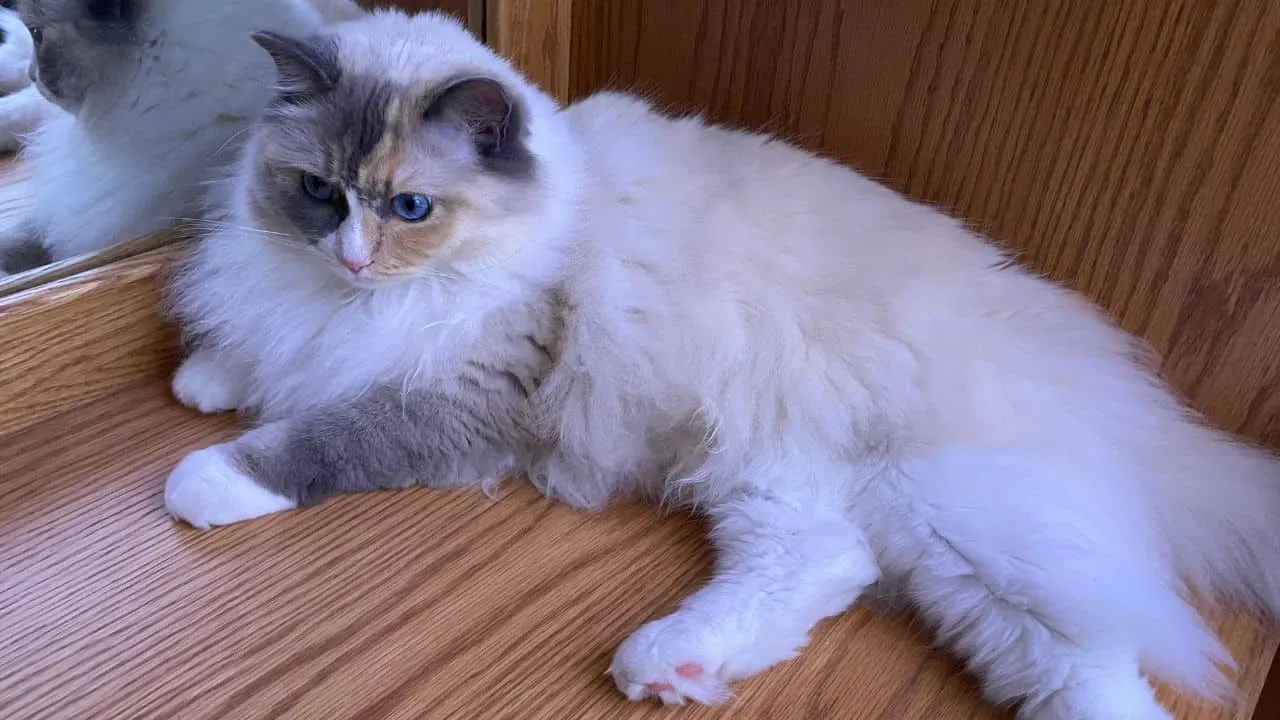 Kalli, a two-year-old blue mitted tortie Ragdoll loved by Arleen
Kalli, a two-year-old blue mitted tortie Ragdoll loved by Arleen
Personality and Traits of Tortie Ragdoll Cats
Tortie Ragdoll cats embody the breed’s floppy, affectionate nature, going limp when picked up for cuddles. Yet, they add “tortietude”—a playful, independent sass that keeps owners on their toes. Owners report vocal tendencies, with chirps and meows expressing demands.
Far from high-maintenance, Ragdolls need weekly grooming for their coat, playtime for stimulation, and a balanced diet. They live 12-17 years on average, shedding seasonally but not excessively. Contrary to myths, they’re not hypoallergenic due to dander and saliva allergens.
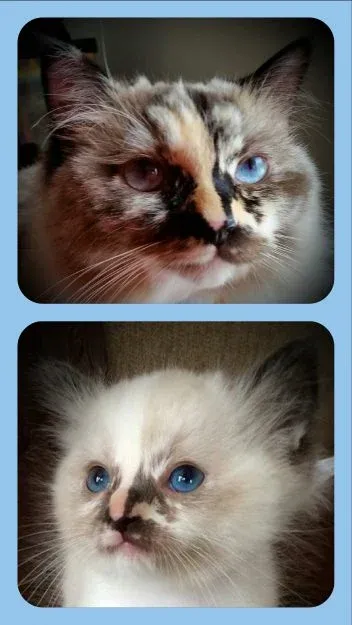 Seal tortie mitted Ragdoll cat Motley Ripley, born February 27, 2016
Seal tortie mitted Ragdoll cat Motley Ripley, born February 27, 2016
Seal Tortie Ragdoll Cats and Variations
Seal torties dominate with brown-red mottling on cream bodies. Bicolors feature white on the chest, belly, and paws, often with an inverted V mask.
Sisters Mia and Mya showcase blazes—white facial stripes—highlighting pattern diversity.
 Seal mitted tortie Ragdoll cats Mia and Mya with blazes, sisters from Cape Coral, Florida
Seal mitted tortie Ragdoll cats Mia and Mya with blazes, sisters from Cape Coral, Florida
Examples include Pacificats Pippa Longstockings and Claire, seal tortie point bicolors evolving from kittens to adults.
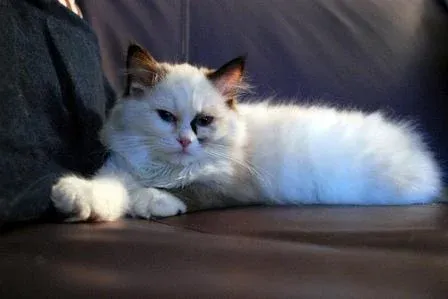 Pacificats Pippa Longstockings, seal tortie point bicolor Ragdoll at 14 weeks
Pacificats Pippa Longstockings, seal tortie point bicolor Ragdoll at 14 weeks Pacificats Pippa Longstockings, seal tortie point bicolor at 7 months
Pacificats Pippa Longstockings, seal tortie point bicolor at 7 months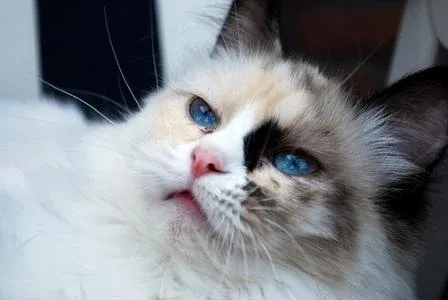 Pacificats Pippa Longstockings, another view of seal tortie point bicolor
Pacificats Pippa Longstockings, another view of seal tortie point bicolor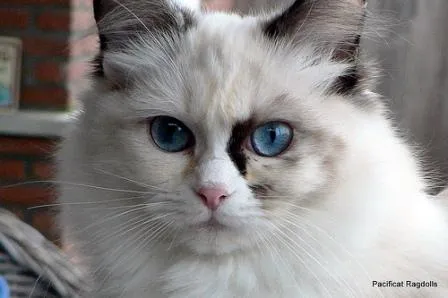 Pacificats Pippa Longstockings, seal tortie point bicolor kitten
Pacificats Pippa Longstockings, seal tortie point bicolor kitten Pacificats Claire, seal tortie point bicolor Ragdoll kitten at 7 weeks
Pacificats Claire, seal tortie point bicolor Ragdoll kitten at 7 weeks
Chocolate lynx torbie bicolors like Snugglers from Lonerock Cattery blend tortie colors with tabby stripes. See chocolate point ragdoll for related shades.
 Pacificats Claire, seal tortie point bicolor at 7 months
Pacificats Claire, seal tortie point bicolor at 7 months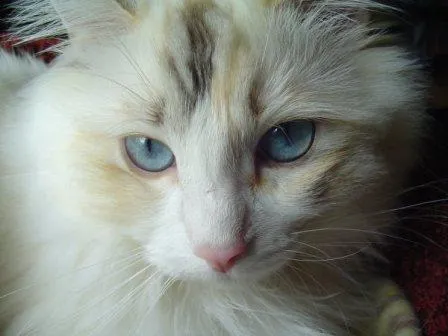 Snugglers, chocolate lynx torbie bicolor Ragdoll cat
Snugglers, chocolate lynx torbie bicolor Ragdoll cat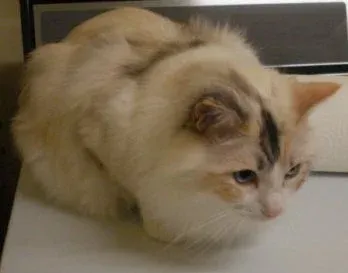 Snugglers, additional photo of chocolate lynx torbie bicolor
Snugglers, additional photo of chocolate lynx torbie bicolor
Glory (chocolate tortie bicolor) and Annabella (seal flame bicolor torbie) exemplify these stunning combos.
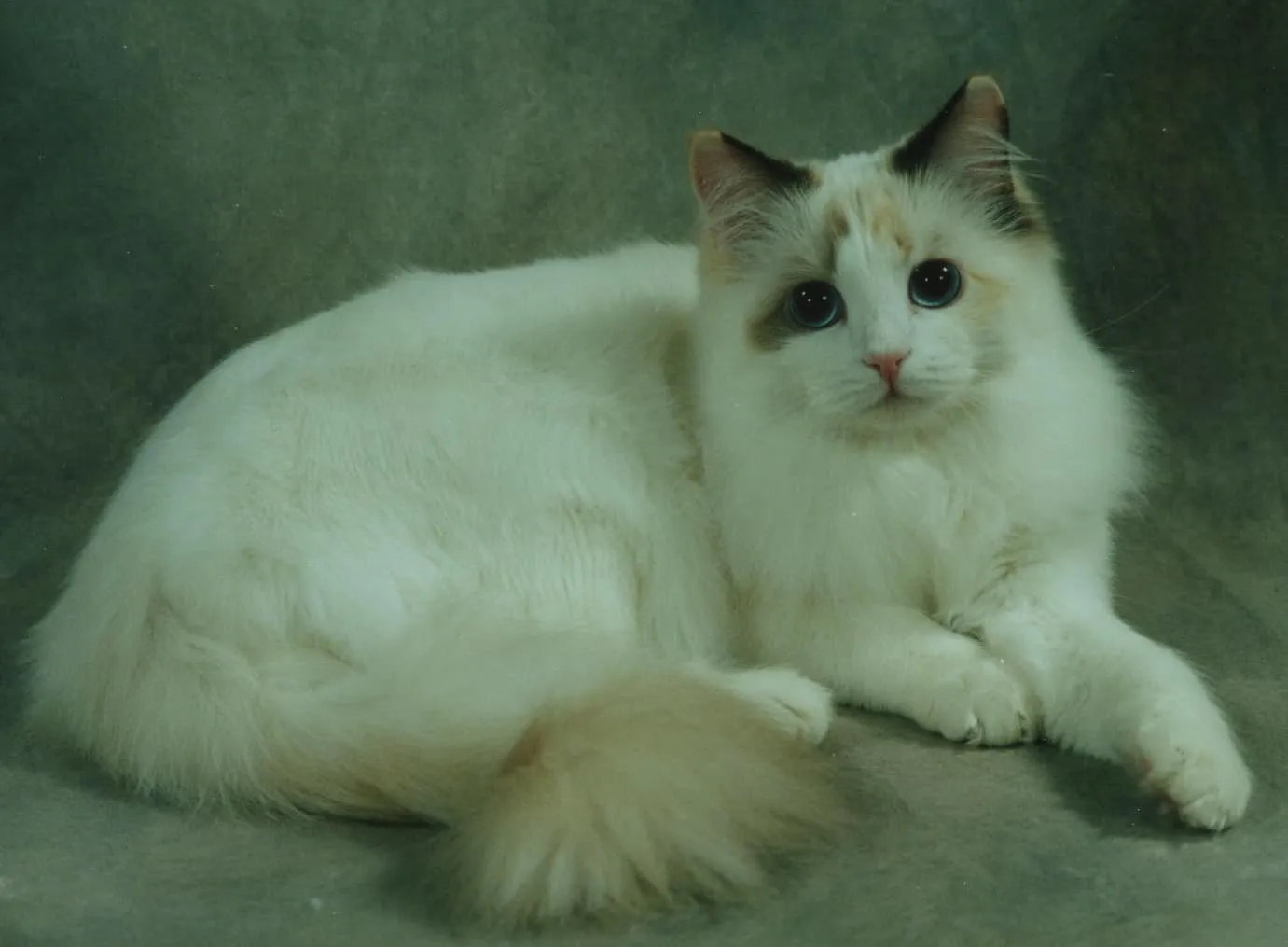 Glory, chocolate tortie bicolor Ragdoll from Lonerock Ragdolls
Glory, chocolate tortie bicolor Ragdoll from Lonerock Ragdolls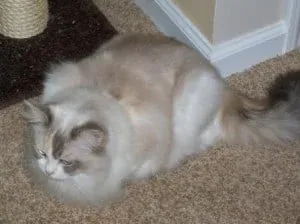 Annabella, seal flame bicolor torbie Ragdoll owned by Brita Pingry
Annabella, seal flame bicolor torbie Ragdoll owned by Brita Pingry
Blue and Cream Tortie Ragdolls
Blue cream torties dilute to softer blue-gray and cream patches. Ivy and Angelight kittens like Chamomile highlight progression from fluffy babies to elegant adults.
 Ivy, blue cream tortie Ragdoll loved by Gina
Ivy, blue cream tortie Ragdoll loved by Gina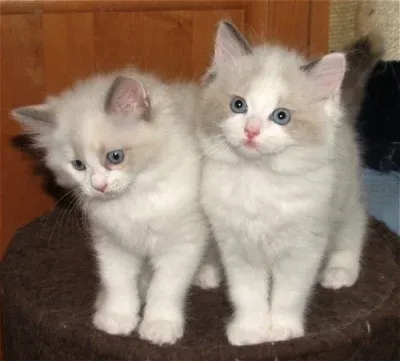 Angelight Ragdolls kittens: blue cream tortie point bicolor Chamomile and seal tortie sister
Angelight Ragdolls kittens: blue cream tortie point bicolor Chamomile and seal tortie sister
Torbie examples like Lily feature tabby within patches, rarer than solid torties.
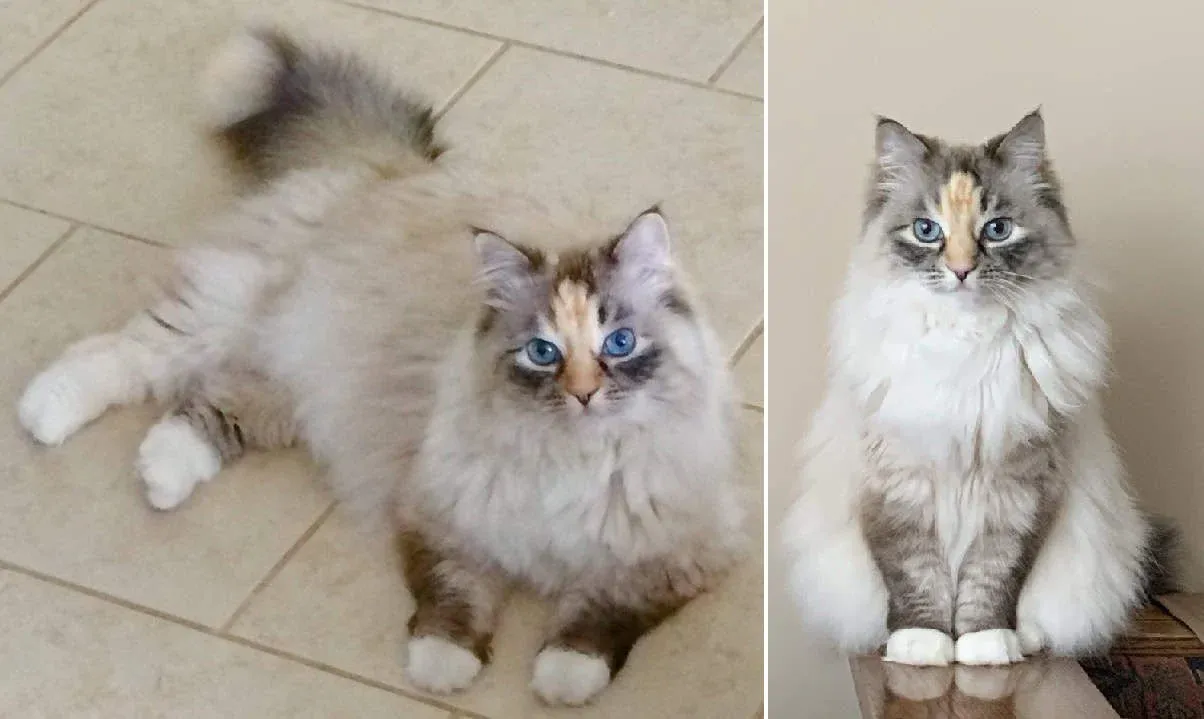 Lily, seal point torbie mitted Ragdoll with flame blaze, loved by Kayla and Sharon
Lily, seal point torbie mitted Ragdoll with flame blaze, loved by Kayla and Sharon
Frequently Asked Questions About Tortie Ragdoll Cats
Can male Ragdolls be tortie? Extremely rare due to XX genetics; most are female.
Do they always have blue eyes? Yes, like all Ragdolls, thanks to a melanin-limiting gene.
Are torties rarer than other colors? Less common than points, but lilac and flame points are the rarest. Note the blue sphynx for hairless contrasts.
Bicolor specifics? White belly, paws, and V-mask with colored back.
In summary, Tortie Ragdoll cats offer unmatched beauty and companionship, blending genetic uniqueness with loving traits. Consult breeders or vets for health, grooming, and nutrition tailored to their long-haired needs. Share your Tortie stories or explore more Ragdoll guides!
References
- CFA Ragdoll Breed Standard: cfa.org
- PetHelpful on Tortie vs. Calico: pethelpful.com
- Ragdoll Fanciers Worldwide: rfwclub.org
